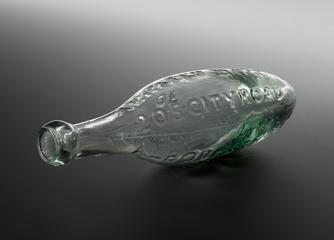
Lightweight life-saving stretcher designed for mountain rescue, 1996.
- Made:
- 1996
Lightweight life-saving mountain rescue stretcher, designed by Royal College of Art students Jonathan Crabtree and Nick Kemp, 1996.
The stretcher was designed by student Nick Kemp (Royal College of Art/Imperial College Innovation Design Engineering student) and Jonathan Crabtree and sponsored by GQ parachutes. The lightweight stretcher weighs only 4kg as opposed to the 20kg of a conventional steel stretcher. It is designed to fit inside a standard mountaineering rucksack and can be carried on a search (rather than having to radio for a stretcher) saving valuable time on a rescue mission.
The stretcher unfolds and two inbuilt cannisters of chemicals mix, forming polyurethane foam. This inflates the nylon stretcher. Chemicals housed around the main cannister also mix, releasing heat which ensures that the foam can form properly and the stretcher fully inflate even at temperatures as low as -40 degrees C.
The multiple layers of nylon fabric in the stretcher are joined together by threads which help keep the stretcher walls at an even distance from each other.
The stretcher was developed in conjunction with an RCA technician in the fabric department who was at the time developing layered fabrics. Their collaboration produced the foam-holding structure necessary for the stretcher. Although the stretcher did not make it into production, a few years afterwards Marconi announced their intention of using polyurethane foam inflated fabrics to made space stations.
Details
- Category:
- Materials Science Gallery
- Object Number:
- 1997-493
- Materials:
- polyurethane, nylon, aluminium (metal), pressure sensitive adhesive tape and synthetic stitching
- type:
- stretcher
- credit:
- Nick Kemp




